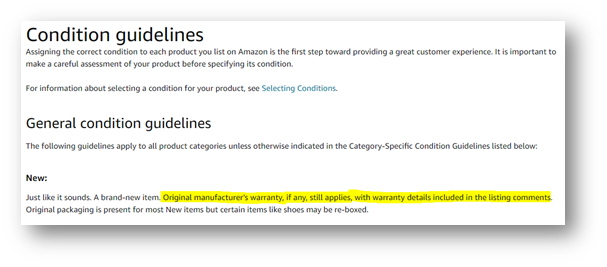Let's dive into Amazon's Brand Registry program.
Is Brand Registry Useful in Removing Sellers?
If you are in the eCommerce brand protection realm to any extent (and aren’t living under a rock), you’ve noticed that there is some confusion surrounding Amazon brand registry tools and the similar tools presented by other marketplaces such as Walmart and Ebay: What should you use them for? What do they address? What helps or hurt your cause in spurring the marketplace to action?
You may find some comfort in knowing that 1) No one really knows 2) The way brand registry handles requests varies by team receiving the request, time of day, and the direction the wind is blowing and 3) Even the most experienced brand protection attorneys using brand registry employ the ol’ trial-and-error approach to get things done.
Not comforted? Ok, let me try to provide some more concrete and practical tips in using Amazon’s brand registry tool:
Using Brand Registry for Legitimate Claims
In general, brands have success in submitting legitimate counterfeit product claims to Amazon through brand registry. What we mean by “legitimate” is that the listing at issue is definitely a knock-off product, it is not your brand’s actual product (i.e. an old version, different packaging, discontinued SKU, etc), and it is being passed off as your branded product by having your brand name/trademark in the title and/or imagery.
These listings submitted through brand registry with the proper documentation, such as side-by-side proof of the differences between the knock-off and your authentic product, are typically resolved by tickets submitted to brand registry.
That said, as we explain below, submitting a high number of “false alarms” and then submitting an actual counterfeit case may lead your actual counterfeit claim to fall flat and never get addressed.
Where Brand Registry Can Fall Flat
We often see that the Brand Registry program doesn't work well for sellers. Remember that Amazon is consumer-minded—not brand-minded and prefers there are several sellers on your listings competing for the BuyBox, driving down prices and keeping Amazon as the place to go for low prices.
We get this question often from brands:
“How do we use brand registry to get rid of unauthorized sellers?”
The answer is simple: You don’t. Within Amazon seller terms, it specifically states that Amazon does not enforce contractual provisions between a brand/manufacturer and sellers.
Enforcement of a reseller agreement, distributor agreement, or any other contract you may have in place with a down-channel business is entirely in your hands as the brand. In other words, to Amazon, there are no “unauthorized sellers.” Every seller is just that—a seller. It is your policies, your program, and your unique contractual relationships to create, protect, and enforce.
Tips and Tricks
My most important tip to keep in mind is to avoid submitting wishy-washy, incorrect, or fraudulent claims through brand registry. Every time that you, as a brand, submit a form to brand registry that Amazon declines, your—think of it as a “brand registry score/rating”—takes a hit inside Amazon’s algorithm. This is another reason that you shouldn’t submit unauthorized/unknown sellers through brand registry.
Secondly, and this is a bit more in-depth and relies on the proper brand protection foundation that we’ve discussed in great detail in previous blogs, there is the potential to use Amazon’s own seller terms against them: Within Amazon’s own Seller Central Product Guidelines, Amazon states that a product listed with the condition “New” must have the original manufacturer’s warranty attached (see below).
There are brand protection attorneys reporting mixed-to-moderate results in submitting a claim through brand registry claiming the condition of a seller’s listing needs to be changed off of “New” if/when the brand has a proper reseller program in place that provides the warranty only to product sold through authorized sales channels/resellers.

It certainly makes sense and is something that Amazon would have a hard time explaining if they don’t adhere to their own policies, but, again, this approach is premised on the condition that your brand has and utilizes a legitimate reseller program.
To discuss options around creating a reseller program and/or setting up effective enforcement for your brand, schedule a consultation.







.png)
.png)
.avif)